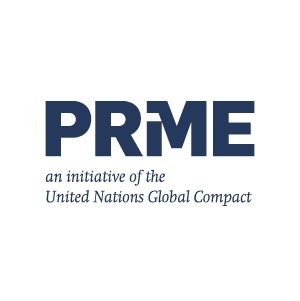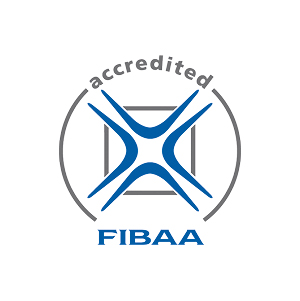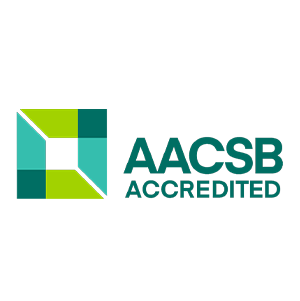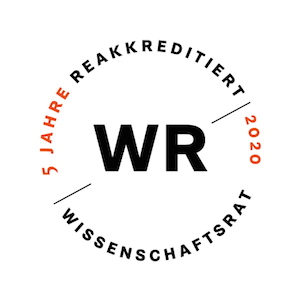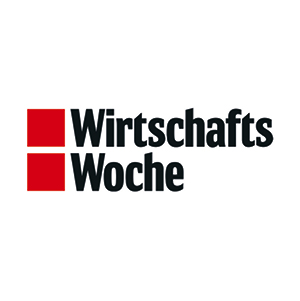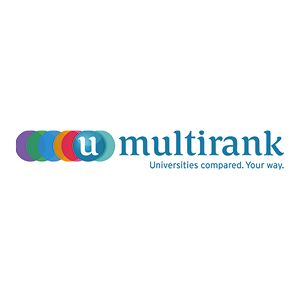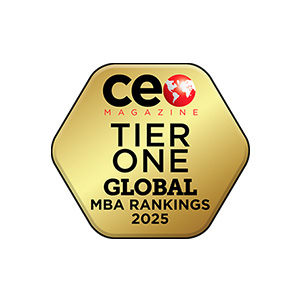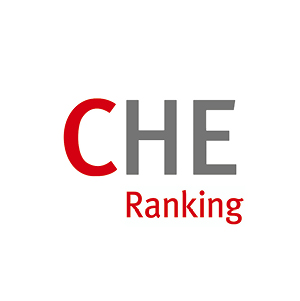This Website uses cookies to improve your visit on our website. More Info
Résumé: How to be convincing in every Application
A résumé is more than just a list of professional stations; it is the personal figurehead of every applicant. In a world where first impressions count and competition reigns, a well-crafted résumé can open the door to new career opportunities. In this article, we'll explore the art of the résumé, from the key elements every résumé should have to tips on how to stand out from the crowd. The following advice will help you create a résumé that showcases your skills and experience in the best possible way.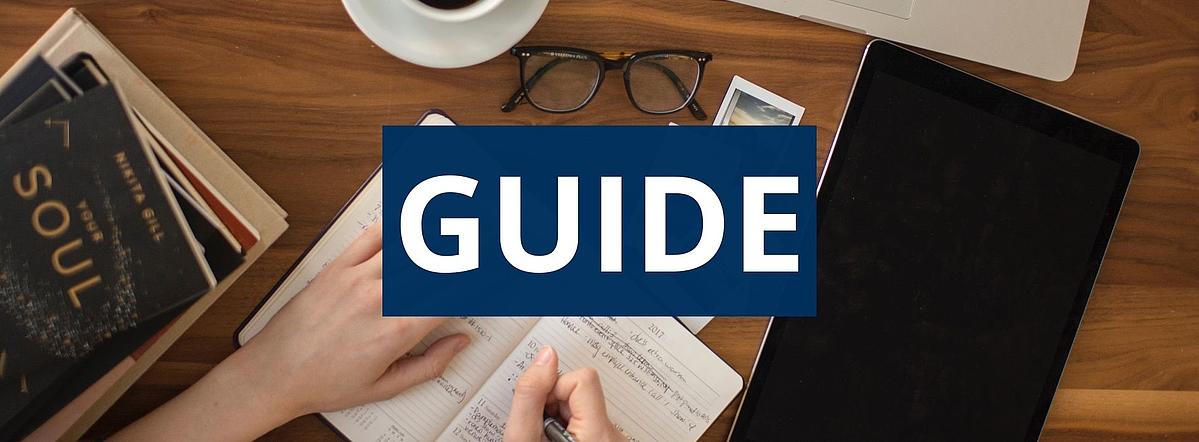
What is a Résumé?
A résumé, often called a CV (Curriculum Vitae), is a document that summarizes a person's professional career. It typically contains information about apprenticeship, work experience, qualifications, skills and personal data. The résumé is used to give potential employers an overview of the applicant's skills, experience and professional potential. It is mostly used when applying for jobs, internships or academic positions and is often the decisive element on the basis of which employers decide whether to invite a candidate for an interview.
What is the function of the Résumé?
The résumé has several important functions in the application process:
- Overview of professional career: The résumé gives employers a structured and detailed overview of your previous professional experience, educational background and acquired qualifications.
- Presentation of qualifications: It outlines the specific skills and knowledge you possess that are relevant to the position you are seeking and highlights your professional achievements and contributions.
- First impression: The résumé often serves as the first encounter between you and potential employers and plays a crucial role in making a positive first impression.
- Pre-selection tool: For employers, the résumé is an important tool for pre-selecting candidates. It enables them to quickly assess the suitability of applicants and decide who will be invited for interview.
- Basis for discussion: During a job interview, the résumé often serves as a basis for questions and discussions. Interviewers use it to delve deeper into your professional history and discuss specific points or projects.
- Marketing tool: Finally, the résumé is a personal marketing tool that presents your professional brand. It reflects your professionalism, attention to detail and ability to present yourself effectively.
Overall, the résumé is a key document that clearly and convincingly presents your professional identity and suitability for a position.
If, after successfully creating your résumé, you are still looking for information for your later Job Interview or your Salary Negotiation in the job interview, then take a look at our corresponding pages. Many exciting tips and tricks are waiting for you.
To the Overview page of the Guide TopicsRésumé: Structure & Content
A résumé should contain the following elements to provide a comprehensive overview of qualifications and professional experience. Each point should be clear, concise and tailored to the position you are applying for in order to best present your suitability. Make sure your résumé is clearly structured, concise and easy to read. Use a professional font and keep the content to one or two pages maximum, unless there are specific requirements for a more detailed presentation.
| Personal Data | Name, address, telephone number, e-mail address and optionally a professional photo. |
|---|---|
| Career Goal (optional) | A brief summary of your career goals or what you would like to achieve in the position you are applying for. |
| Work Experience | Start with your current or most recent position and work backwards through your work history. For each position, you should include the job title, the name of the company, the time period you worked there, and a description of your duties and accomplishments. |
| Educational History | Information about your school and academic apprenticeship, also in reverse chronological order. This includes degrees, subjects studied, any special academic achievements and the date of graduation. |
| Additional Qualifications and certificates | Here you can list your other qualifications that underline your suitability for the position, such as further training, workshops or industry certificates. |
| Skills | A list of relevant skills that are useful for the position you are applying for, such as language skills, IT skills and other subject-specific skills. |
| Internships or Volunteer work (optional) | If you have done relevant internships or volunteer work that complement your skills and experience, you can list them here. |
| Interests and Hobbies | Optionally, you can also list interests and hobbies, especially if they are relevant to the position or highlight your personal skills. |
| References (optional) | Contact details of people who can serve as a reference for your professional competence and character, but often with the note “References on request”. |
Format & Layout of a Résumé: How do I write a Résumé?
When writing a résumé, the format and layout is critical to making a professional impression. Here are some important tips on format and layout, including deciding whether to use a photo:
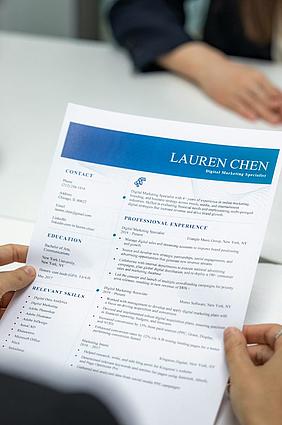
- Structuring: Start with your personal details (name, address, telephone number, e-mail address) at the top of the page. This is followed by a clear heading, such as “Résumé” or “Curriculum Vitae”, followed by the main sections: Career Objective/Summary, Work Experience, Educational Background, Skills, Additional Qualifications/Certifications, Interests/Hobbies, and References (optional).
- Font type and size: Use a professional font such as Arial, Calibri or Times New Roman, in a size between 10 and 12 points. Keep the font size slightly larger for headings to create a clear hierarchy.
- Clear design: Make sure there is enough white space and use clear paragraphs, bullet points and headings to make the résumé easy to read. Avoid excessive embellishments or graphics that could distract from the content.
- Photography: The decision whether to include a photo on the résumé depends on cultural standards and industry conventions. In some countries and industries, an application photo is expected, while in others it is considered unusual or even inappropriate. If you decide to take a photo, it should look professional, with a neutral background and appropriate clothing.
- One-page format: Keep the résumé to a maximum of one page, especially if you are at the beginning of your career or applying for a position that does not require extensive work experience. For more advanced careers, a résumé can be two pages, but the content should always be relevant and concise.
By following these guidelines, you can ensure that your résumé looks professional and draws the attention of potential employers to your qualifications.
Resume Template Word Free

What is the difference between
curriculum vitae & résumé?
Difference between résumé, curriculum vitae
| Characteristic | Résumé | Curriculum Vitae (CV) |
|---|---|---|
| Length | Can be one or more pages | Can be several pages, often more detailed than a résumé |
| Usage | Commonly used in Europe | Common in academic and international contexts |
| Content | Contains a detailed list of professional experience, qualifications, education and skills | Includes a comprehensive account of academic apprenticeship, research, publications and professional experience |
| Flexibility | Less flexible in terms of format | May vary depending on the requirements and conventions of the country or industry in question |
| Academic focus | Less common in non-academic contexts | Commonly used in academic and research settings |
| Additional content | May include personal interests, hobbies and references | Often includes a list of academic awards, scholarships and memberships in professional organizations |
The term “curriculum vitae” (CV) is often used interchangeably with the term “résumé”, but each has specific meanings and uses. These differences may vary depending on regional and professional contexts, but this table provides a general overview of the differences between a résumé and a curriculum vitae.
Writing a Résumé: What should I pay attention to?
It is extremely important to tailor your résumé to the profession and specific job you are applying for. Here are some important points to look out for:
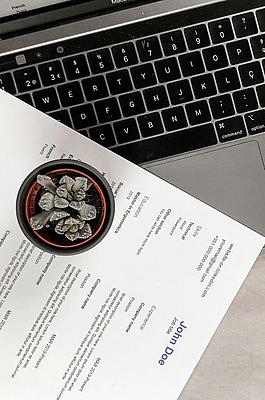
- Job description: Read the job description carefully to understand the requirements and qualifications for the position. Customize your résumé by highlighting your experience, skills and accomplishments that best fit the job requirements.
- Keywords: Incorporate keywords and phrases from the job description into your résumé. Many companies use automated application systems that scan résumés for relevant keywords to select candidates.
- Professional experience: Emphasize relevant professional experience that highlights your suitability for the position you are applying for. If possible, use concrete examples and quantitative results to illustrate your achievements.
- Skills and qualifications: Customize your skills and qualifications section to highlight those that are most relevant to the position. This could include technical skills, industry knowledge or soft skills.
- Format and layout: The format and layout of your résumé should be professional and easy to read. Choose a layout that presents your qualifications and experience clearly and concisely.
- Length of résumé: Make sure your résumé is the right length. For most professions, one page is sufficient, but for experienced professionals or people with extensive work experience, a résumé can be two pages long.
By tailoring your résumé to the job and the specific position, you show potential employers that you understand the requirements of the position and that you have the skills and experience to succeed.
Resume Template Word Free
What types of Résumés are there?
There are different types of résumés that can be customized according to individual needs and the type of application. Some common types are explained in more detail here.
Overview: Types of Résumés
The following graphic provides a brief overview of the most common types of résumés that are frequently encountered.

Explanation: Types of Résumé
Choosing the right CV format depends on your individual situation, your career goals and the requirements of the job you are applying for.
Chronological Résumé
This is the most common type of résumé, where your professional experiences are listed in reverse chronological order, starting with your current or most recent position and working backwards to your earliest. This résumé is particularly good for showing consistent and continuous professional development.
Functional Résumé
A functional résumé focuses more on your skills and qualifications than on your professional history. Experience is grouped according to relevant skills rather than listed in chronological order. This type of résumé can be useful if you have gaps in your employment history or want to change your career goals.

Combined or Hybrid Résumé
This type of résumé combines elements of the chronological and functional formats. It contains a summary of your skills and qualifications as well as a chronological list of your professional experience. This allows you to highlight your strengths while also showing your career continuity.
Targeted Résumé
A targeted résumé is tailored specifically to a particular job or industry. It emphasizes your most relevant skills, experience and achievements that best fit the position you are seeking. This often requires customization of the résumé for each application.
Online or digital Résumés
These résumés are created for online applications or for presentation in digital formats. They can include interactive elements such as links to online portfolios or multimedia content to further illustrate your skills and experience.

Tips for sending your
résumé online correctly?

Send your Résumé online
| File format | Ideally, send the résumé as a PDF file to ensure that the format and layout are retained and can be displayed consistently on all devices. |
|---|---|
| File name | Name the file clearly, for example with your name and the word “résumé” or the name of the position you are applying for. |
| Email subject line | Use a clear and meaningful subject line in your email, e.g. “Application for [position] - résumé of [your name]”. |
| Cover letter | Compose a short and concise email thanking you for the opportunity to apply and summarizing the key reasons for your interest in the position. |
| Check attachments | Make sure you have attached all the required documents, including the résumé, cover letter and any additional documents such as references or certificates. |
| Recipient address | Check the recipient address carefully to make sure you are sending the application to the right person or department. |
| Netiquette | Observe the usual rules of courtesy when sending emails and avoid overwhelming the recipient by sending too many emails or being too pushy in your communication. |
| Spelling and grammar | Make sure your email and résumé are free of spelling and grammatical errors, as this gives a professional impression. |
| Email signature | Add a professional signature to your email that includes your name, contact details and links to your LinkedIn profile or website if applicable. |
| Confidentiality | If you have confidential information in your résumé, make sure you follow data protection regulations and send your application to a secure recipient. |
When sending a résumé online, there are some important tips to keep in mind to ensure it comes across professionally and effectively. By following these tips, you can ensure that your résumé is sent professionally and effectively online and makes a positive impression on potential employers.
Create a Résumé: Special Information
How should I formulate special Details?
For specific details such as skills, hobbies, driving license and language skills, it is important to formulate relevant information clearly and precisely to underline your suitability for the position you are applying for. Here are some tips on how you can best integrate this information into your résumé:
Knowledge/Skills
- List your most important knowledge and skills that are relevant to the position you are applying for. This could be technical skills, programming languages, software skills or other specialized knowledge.
- Use precise terms and describe your skills in a way that shows how you have applied them in practice. For example: “Experienced in using Microsoft Office Suite, including Word, Excel and PowerPoint, to create reports and presentations.”
Hobbies/Interests
- Select hobbies and interests that reflect your personality, skills or suitability for the position you are applying for. For example, team or sports activities could demonstrate your teamwork and assertiveness.
- Avoid listing overly personal or controversial hobbies unless they are directly relevant to the position you are applying for.
Driver's License
- Indicate whether you have a driver's license and which classes you have. This may be particularly relevant for positions that require travel or where driving is part of the duties.
Language Skills
- Indicate the situations in which you have used the language, e.g. professionally, academically or personally.
- List your language skills and indicate the language level (e.g. basic, fluent, native speaker level) according to the Common European Framework of Reference for Languages (CEFR).
- Use the CEFR system preferably. The gradations are as follows:
- A1 - basic knowledge
- A2 - basic knowledge of the language
- B1 - Intermediate knowledge
- B2 - Good intermediate level
- C1 - advanced knowledge
- C2 - excellent knowledge
- Alternatively, you can rate your language skills as follows:
- “Native speaker”
- “Business fluent”
- “Fluent in spoken and written”
- “Very good knowledge”
- “Good knowledge”
- “Basic knowledge”
- Use the CEFR system preferably. The gradations are as follows:
It is important that you only provide relevant and meaningful information and that you formulate it precisely and clearly. If possible, you should back up your information with concrete examples or experiences to strengthen your credibility.
What can I leave out of my Résumé?
In your résumé, you should focus on relevant information that underlines your suitability for the position you are applying for. Here are some things you can possibly leave out:
- Irrelevant work experience: If you have many years of work experience and some positions are not directly related to the job you are seeking, you can leave them out or only mention them briefly without going into detail.
- Unimportant personal data: Personal details such as date of birth, marital status or religion are no longer required on a résumé in many countries and can therefore be omitted unless they are relevant to the position.
- Superfluous details about your apprenticeship: If your apprenticeship is not directly related to the position you are applying for or is already evident in your work history, you can limit yourself to the most important qualifications and degrees without going into detail.
- Missing periods: If you have gaps in your résumé, you don't necessarily have to mention them explicitly. However, if you have had an extended period of time off that is relevant to your professional development, you may want to explain this.
- Superfluous personal interests: Personal interests and hobbies can reflect your personality, but if they are not relevant to the position you are seeking or take up space on your résumé, you can leave them out or keep them to a minimum.
- References on request: It is no longer common to include references directly on your résumé. Instead, you can indicate that references are available on request to save space and focus on your qualifications.
By removing unnecessary or unimportant details from your résumé, you can ensure that it remains concise, relevant and appealing.
Overview of mandatory & voluntary Information in the Résumé
The following table shows the typical mandatory information that should be included in a résumé, as well as some optional information that can be added to give a more complete picture of your personality and professional background. It is important to note that the decision of whether or not to include certain information in the résumé depends on individual circumstances, the nature of the application and industry standards.
| Mandatory information | Voluntary information |
|---|---|
| Name | Photo |
| Contact details (address, telephone number, e-mail) | Personal summary/professional profile |
| Career goal | Personal interests/hobbies |
| Professional experience | References |
| Education | Additional qualifications/certificates |
| Skills/knowledge | Voluntary activities |
| Publications/research projects | |
| Memberships in associations/organizations |
Can I have Gaps in my Résumé?
It is quite possible to have gaps in your résumé, whether due to unemployment, further training, illness or personal reasons. Here are some ways you can deal with gaps in your résumé:
Honesty
Be honest and transparent about the reasons for the gaps. It is important that you do not make false statements or withhold information.
Explanation
Explain the reasons for the gaps in a positive and professional way. For example, you can mention that you have reoriented yourself professionally, taken further training or taken care of family matters.

Focus on the Positive
During the interview or in your cover letter, emphasize what you did during the gap period to improve your skills or advance your career goals. This could be further training, voluntary work, volunteering or projects.
Emphasize Relevance
Focus on the relevant experience and skills you have gained during your career to date and emphasize how these can contribute to the position you are applying for.
Future Plans
Show that you are ready to return to work and pursue your career goals. Emphasize your motivation and enthusiasm for the position you are applying for.
By addressing the gaps in your résumé openly and positively and focusing on your strengths and successes, you can show potential employers that you can learn and grow from difficult situations.

Overview: Dos & Don'ts
in the résumé

Dos & don'ts in your résumé
| Dos | Don'ts |
|---|---|
| Use a clean and professional layout. | Don't overload the résumé with too much information. |
| Tailor the résumé to the specific job and company. | Don't use misleading or unclear headings or descriptions. |
| Use clear and concise wording. | Do not use personal pronouns such as “I” or “my” in your résumé. |
| Emphasize your successes and achievements with specific examples. | Do not include false or inflated information. |
| List relevant skills and qualifications. | Do not use unprofessional email addresses or fonts. |
| Use active verbs to describe your experience. | Do not use contradictory information or gaps in your résumé. |
| Check spelling and grammar carefully. | Do not copy passages from templates or sample résumés. |
| Use a consistent format and layout. | Do not use excessive formatting or graphics that distract from the content. |
| List relevant education or certifications. | Do not include outdated or irrelevant information. |
| Follow the requirements of the job description and the company. | Do not use unspecific or generic wording. |
These dos and don'ts provide guidance on how to create an effective and professional résumé that showcases your qualifications and experience in the best possible way.
Final tips for your résumé
Here are some final tips for your résumé so you can move confidently into your future with your new job:

- Honesty is key: Lying or exaggerating can lead to serious consequences and affect the trust of potential employers. Stick to the truth and emphasize your actual achievements and skills instead.
- Update regularly: Always keep your résumé up to date by adding new experiences, qualifications and professional developments. This will allow you to respond quickly to application opportunities.
- Adapt to the target position: Adapt your résumé to each position you apply for. Emphasize those skills, experience and qualifications that are most relevant to the position and leave out unimportant details.
- Maintain professionalism: Make sure your résumé has a professional layout, clear structure and error-free spelling and grammar. This will help to make a positive impression and attract the employer's attention.
- Get feedback: Ask friends, family members or professional contacts to review your résumé and provide feedback. External feedback can help you identify any weaknesses and improve your résumé.
- Self-marketing: Use your résumé as a marketing tool to effectively showcase your skills, experience and achievements. Emphasize what sets you apart from other applicants and why you are the ideal candidate for the job.
- Check your online presence: Employers often look at your online presence as well, so make sure your résumé is consistent with your profiles on LinkedIn or other professional networks.
- Prepare for the interview: Be prepared to discuss your résumé in the interview. Be ready to talk about your professional experience, skills and achievements and show how these fit the position you are applying for.
By keeping these final tips in mind, you can ensure that your résumé is professional, effective and authentic in achieving your career goals.
TIP #1 FROM THE PRO: ADAPT THE LAYOUT TO YOUR DESIRED POSITION
In concrete terms, this means that if you are aiming for a creative job, you can also design the layout creatively. This allows you to show off your skills in advance.
The tip also relates to your experience. For example, if you are applying for a junior position, you can make the résumé a little more creative or special to show your commitment. But if you are applying for a senior role and already have a lot of experience, then your résumé should be clean, minimal and preferably in tabular form. This demonstrates the professionalism you have learned. Let your experience speak for you, that's enough. To summarize, the more experience you have and the higher the position you are applying for, the fewer frills your résumé should contain.
Checklist for the Résumé
Here's a résumé checklist to help you get organized and make sure you've considered and prepared everything important:
| Personal information | |
|---|---|
| Name | |
| Contact information (address, telephone number, e-mail address) | |
| Professional goal | |
| Clearly formulated professional goals or career intentions | |
| Work experience | |
| Chronological list of previous jobs (or relevant internships) | |
| Name of the company or organization | |
| Position or activity | |
| Period of employment (month and year) | |
| Description of duties and responsibilities | |
| Mention of special achievements or successes | |
| Education | |
| Academic degree (e.g. Bachelor, Master, Doctorate) | |
| Name of the educational institution | |
| Degree program or field of study | |
| Graduation date or expected graduation date | |
| Additional information such as awards or relevant courses | |
| Skills and knowledge | |
| Technical skills (e.g. programming languages, software) | |
| Soft skills (e.g. ability to work in a team, communication skills) | |
| Language skills (level and languages) | |
| Additional information | |
| Voluntary activities | |
| Hobbies or interests that underline your personality or skills | |
| Further training, certificates or relevant courses | |
| Formatting and layout | |
| Clear and professional layout | |
| Clear structure with sections and subdivisions | |
| Consistent format for dates and bullet points | |
| Use of an easy-to-read font and appropriate font size | |
| Proofreading | |
| Check for spelling and grammatical errors | |
| Checking the completeness and accuracy of all information | |
| Adaptation to the target position | |
| Tailoring the résumé to the requirements and qualifications of the target position | |
| Highlighting the most relevant experience and skills | |
| Review of online presence | |
| Updating and consistency with other online profiles such as LinkedIn | |
| Removal of inappropriate or unprofessional content if necessary |
This checklist can help you to ensure that your résumé is complete, correct and appealing and will help you to convince potential employers.
Related Guide Topics:
Salary Negotiation
Working alongside your Studies
Working Student
FAQ
Writing a résumé in English starts with the choice of format, with the reverse chronological format being the most common. Here, the most recent professional experience is listed first. The information on your résumé should be clear, concise and relevant to the position you are applying for. Start with your contact details, followed by a brief summary or professional profile highlighting your main qualifications. Then list your professional experience by describing your responsibilities and achievements with active verbs. Education and special qualifications such as certificates or language skills should also be mentioned. It is also important to pay attention to error-free grammar and spelling and to integrate keywords from the job description to increase visibility through automated application systems. A professional layout and an appropriate format round off the English résumé.
Including skills on a résumé should be done strategically to emphasize your suitability for the position you are seeking. You should first identify the skills that are most relevant to the position by carefully analyzing the job description. These skills are then placed in a separate section of the résumé, often titled “Competencies” or “Specialized Skills”. It is helpful to list both hard skills, such as specific technical knowledge or software skills, and soft skills, such as teamwork or communication skills. Each skill should be precisely worded and, if possible, backed up with specific examples or achievements that show how these skills have been successfully applied in practice. This allows an employer to quickly recognize how the applicant's skills can contribute to fulfilling the job requirements.
Yes, it is possible to write an application without a traditional résumé, especially in creative industries or when a portfolio or project work is the main focus. In such cases, the focus can be on a strong cover letter detailing professional experience and skills, or a presentation of work samples that demonstrate suitability for the position. Some companies or industries that encourage innovative application processes may even explicitly favor alternative application forms instead of a traditional résumé. However, it is important to note that in most professional contexts, and especially in formal application processes, a résumé is still expected to provide a complete overview of the applicant's professional history.
No, an application and a résumé are not the same thing. An application comprises all the documents submitted for a job, including the cover letter, résumé and often other attachments such as certificates or references. The résumé is part of the application and provides a structured overview of the applicant's professional career, apprenticeship, qualifications and skills. While the résumé tends to present facts, the cover letter serves to present the motivation and suitability for the position in more detail.
In a résumé, “knowledge and skills” are those specific qualifications and competencies that an applicant possesses that are directly relevant to the advertised position. They include both “hard” knowledge, such as technical skills and expertise in specific areas or programs, and “soft” skills, such as interpersonal skills, problem-solving skills and adaptability. These skills are often listed on the résumé in a dedicated section to show potential employers how well qualified the applicant is for the position. The precise listing and description of these skills helps to focus the reader's attention on the applicant's suitability for the specific requirements of the position.
Interested in a study program? Request our information material now!
More exciting Degree Programs in Munich





